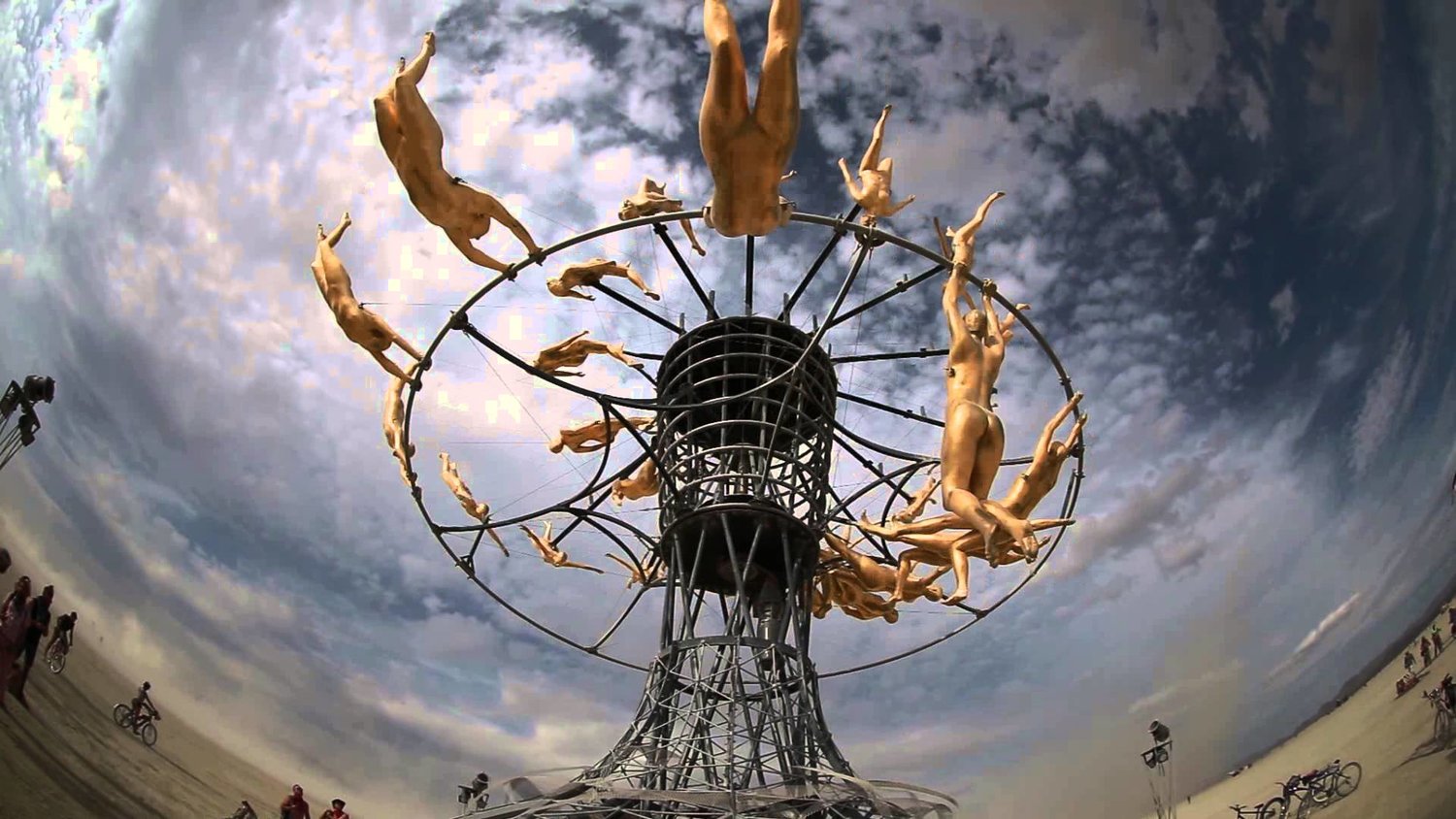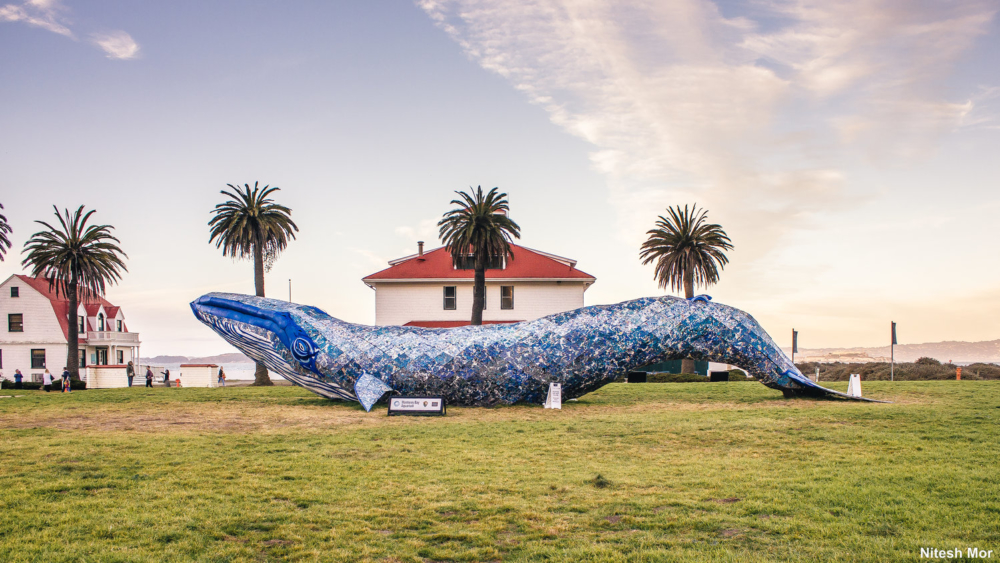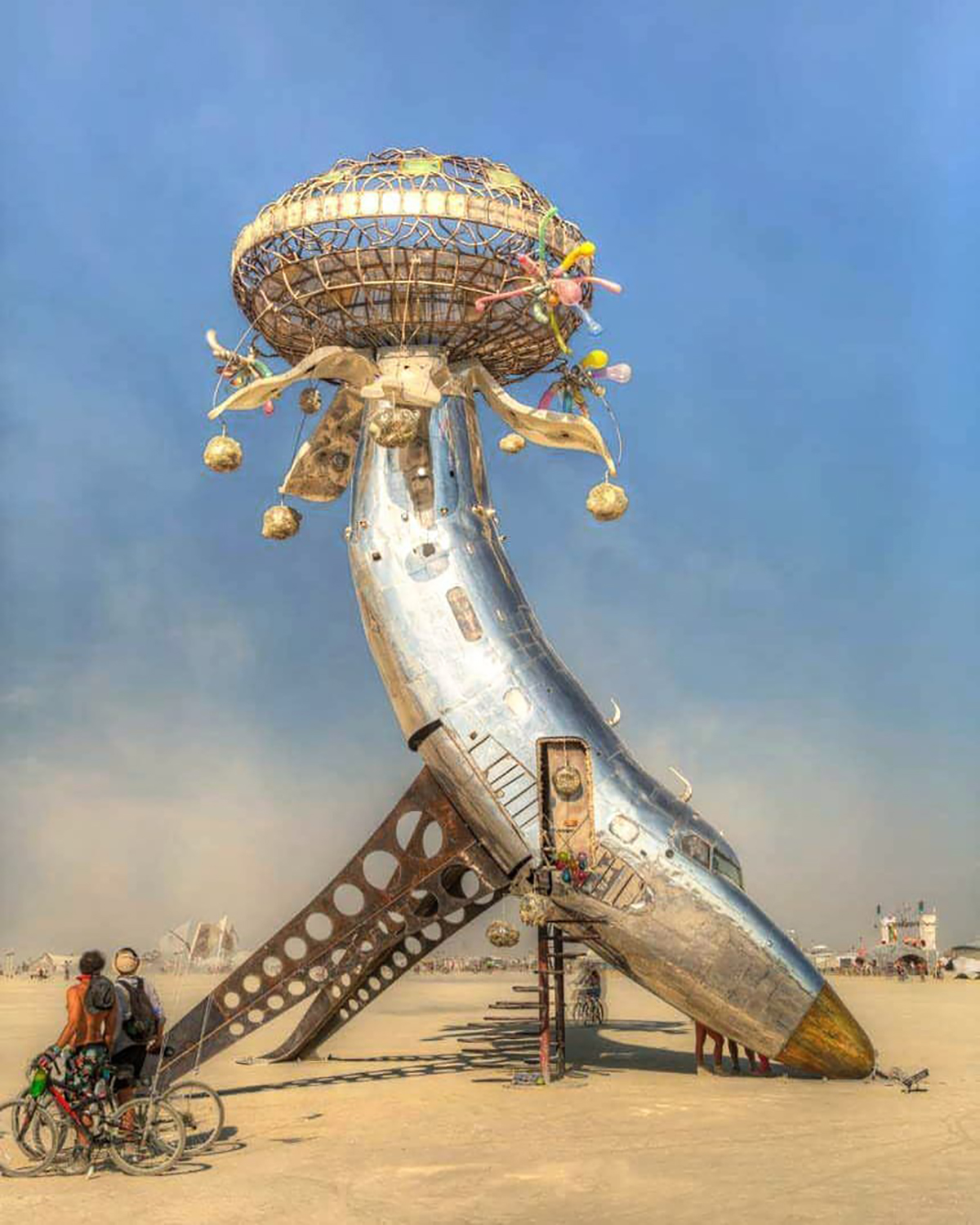 “Eternal Return” By Peter Hudson (24' tall). Installed at Burning Man.
“Eternal Return” By Peter Hudson (24' tall). Installed at Burning Man.The art of engineering
Is engineering an art or a science? Most of us would place it firmly in the latter camp: with the careful application of specific rules and factors, it’s a broad discipline based on scientific and mathematic principles.
But at least one Berkeley Engineering alumnus sees it differently. Alireza Lahijanian (B.S.’09, M.S.’10 ME) is the co-founder of Rbhu, a Bay Area engineering company that specializes in large-scale artwork and entertainment structures. There, his work blurs the lines between art and science. “Art sculptures are not cookie-cutter buildings,” Lahijanian said. “They’re designed outside the box and are aesthetically complex. As engineers, we must find ways to make the aesthetic work while applying principles of physics.”
Officially launched in 2014, the firm is celebrating its seventh anniversary and has completed more than 150 sculptures to date; four in-house engineers are currently working on about 40 projects in various stages of development. The company worked remotely even before the pandemic lockdown, so Lahijanian is able to run the business entirely out of his Berkeley apartment. “Zoom was our format all along,” he said.
The company provides structural and dynamic analysis, 3D modeling and rendering, and structural drawings — mechanical skills applied to the idea that “monumental sculpture can lift the human spirit, ignite our imagination, help us process and express feelings, and bring people together.” For six years, the team has served as the engineering firm and design consultant for the annual Burning Man event in Black Rock Desert, Nevada, as well as many public art installations across the U.S.
But Lahijanian’s quest for greater impact went unrewarded until he reconnected with Selinda Martinez, a former lab-mate at Diablo Valley College, where Lahijanian had studied before transferring to Berkeley in the fall of 2007. The two dreamed about “engineering things with purpose, things that provide joy for people and things that change the world,” he said.
For her senior project at California Polytechnic State University, San Luis Obispo, Martinez worked with sculptor Marco Cochrane on a piece that debuted at Burning Man in 2010. Titled “Bliss Dance,” the 45-foot-tall sculpture has been permanently installed at The Park on the Las Vegas Strip and a smaller version has been featured at the Smithsonian Institution’s Burning Man exhibition.
In 2014 another Burning Man artist, Peter Hudson, was looking for someone to engineer a three-story, 3D “stroboscopic zoetrope” called “Eternal Return.” Still employed with the marine technology company, Lahijanian stepped in, working on the project in his spare time. “I felt like working with artists gave me a much greater impact,” he said. “With art projects, there’s a very tight turnaround. As we were finishing the engineering, they were already building. Three months later, the piece was fully functional.”
Some of those projects have kept Lahijanian awake at night. He remembers one in particular: an enormous teeter-totter, 80 yards long and four stories high, with two live human beings positioned on each end. But every single art project has had its own unique challenge and perfect solution, he said.
During the COVID-19 pandemic, Lahijanian and Martinez created the Rbhu Gives Back program, which pledged $30,000 in pro bono services for artists in support of projects that raised awareness for an issue of the artists’ choosing. The program continues this year with $15,000 in pro bono grants. “It’s an important way for us to give back,” Lahijanian said. “We believe that public art is a way to inspire, to ignite creativity and have a positive impact on people’s health and well-being.”
Lahijanian came alone to the U.S. from Iran at the age of 17, with his family following a year later. Transferring to Berkeley and getting into the fifth-year master’s program was a dream realized, he said. He lived at the International House and made friends across campus and disciplines, living up to his motto of “work hard, party hard.” At Berkeley Engineering, he learned the importance of collaboration, clear communication and the sharing of information in problem-solving. Diversity — of race, gender, ideas and skillsets — was a revelation to him.
Alice Agogino, the Roscoe and Elizabeth Hughes Professor of Mechanical Engineering, remembers Lahijanian as a rigorous, creative student. “As an undergraduate researcher at the Berkeley Energy and Sustainable Technologies Lab, Ali worked on a smart buildings project using wireless sensor networks,” she said. “He was able to integrate a strong knowledge of fundamentals into cutting-edge research tasks — I’m not surprised that he’s applying his intelligence and analytical skills to such innovative projects.”



